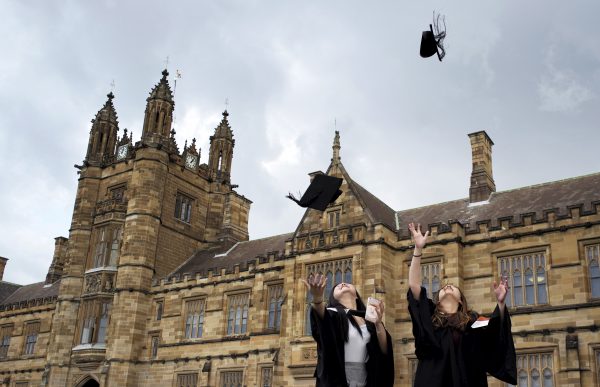Asia’s rising knowledge profile underscores the importance of enhancing regional relations in education and research. China (including Hong Kong), Singapore, South Korea and Japan lead Australia in the Global Innovation Index. Ranking of universities’ research performance shows that, of the top 500 institutions in 2019, 58 are mainland Chinese. Four of them are in the top 100 alongside Singapore’s two. In the top 400, Malaysia now has one while Taiwan has three.
This more multi-polar international knowledge system offers greater prospects for regional collaboration between Australia and its neighbours. China is the world’s newest scientific powerhouse and its leading STEM departments are already prolific partners with Australian scientists. The Australia–China Science and Research Fund and the CSIRO’s work with Chinese researchers have contributed progress on key issues in radio astronomy, aquaculture, energy sustainability, medicine and others.
China is already Australia’s leading research partner in mathematics, engineering and chemistry. Co-authored publications are yielding higher average citation counts than Australian publications in those subject areas. This occurs in a context where at least 35 per cent of articles in international journals are now internationally co-authored. For Australia that figure is 45 per cent and from 1996–2009 the proportion co-authored with China rose from 4 to 14 per cent. There is still significant room for improvement given that rates of co-authorship in India, Southeast Asia and China remain relatively low.
The rise of substantial knowledge diasporas within Australian universities and major alumni groups in both China and ASEAN present opportunities to deepen ties in education and research. Both groups act as valuable bridges between Australia and their homelands, and most are keen to do so.
Australian universities have been slow to invest sufficiently in their large Asian alumni, beyond seeking their financial support. While mainland Chinese and Vietnamese colleagues working in Australian universities are valued for their academic expertise, detailed interviews with them reveal that their additional language and cultural skills, and capacity as bridge-builders, are not always valued to the same degree.
The US–China trade war, that’s morphing into a technology war, is making matters worse. While not unique to Australia, reports of visa delays and refusals — particularly of Chinese researchers and postgraduate students working in high-tech areas such as robotics or new materials — is arguably one indication of the increasingly narrow security lens through which the China relationship is now seen.
In the face of these issues there are green shoots. Instituted in 2014, the New Colombo Plan was a welcome initiative intended to boost student flow between Australia and the region. The scheme supports around 10,000 undergraduate students to undertake a period of study in some 40 locations across the Asia Pacific.
The desire of both ASEAN and Australia not to be forced to choose between the two regional superpowers is understandable at a time of increased regional concerns about great power rivalry in the South China Sea, the US–China trade war and the US regional retreat.
Extending education and research collaboration between Australia and the countries of East and Southeast Asia becomes all the more important at a time of regional instability. Australia’s spectacular failure in language learning (the lowest in the OECD) — and especially Asian languages and Asia literacy more generally — needs redress. More specialist Asia expertise is needed urgently.
Without serious and sustained action to create a bigger local talent pool of Asia specialists, including some drawn from local knowledge diasporas, Australia’s education relations with Asia are likely to falter.
Anthony Welch is Professor of Education at The University of Sydney.

